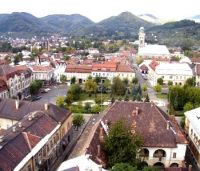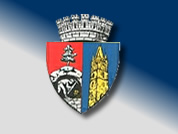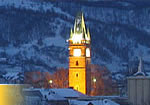The geographic and physical frame and the rich natural resources of the Baia Mare area have from the oldest times given favourable conditions for human communities. Evidence has been found to support that this place was inhabited by primitive people even in the Upper Palaeolithic.
In the Bronze Age, the presence of Thracians, ancestors of Geto-Dacians, is signalled. The Baia Mare basin was part of the great centralised and independent Dacian state created by Burebista. The vast ethnographic, folkloric and linguistic material and also archaeological and historical proofs confirm to us the ethno genesis, age and continuity of Romanians on this land.
The first written information about Baia Mare shows us a developed mining centre, with the aspect of a medieval town, with rules of organization characteristic to the free towns of the time, being only subjected to the central authority of the state.
The first documentary certification appeared more than six centuries ago, in 1329 when the office of King Charles Robert issued a document in which Baia Mare was mentioned for the first time under the name "Rivulus Dominarum" (Ladies’ River).

The most ample information about the administrative organisation, the eligibility of the ruling bodies and their competence are given to us in the privileged document issued by the office of The Great King Louis I of Anjou on the 20th of September 1347.
Baia Mare Mint is first mentioned in a document from 1411 as one of the oldest and most famous structures of the kind in Transylvania.
In 1446 Baia Mare’s domain together with its mines were transferred in the property of the Corvinesti family, as a way of rewarding John Hunyadi’s acts of bravery against the Ottoman invasion.
He ordered the building of “St. Stephen” cathedral, whose annex was the imposing “Stephen’s Tower”.
In 1469, Matthias Corvinus issued a very significant document for the citizens of Baia Mare, by which he granted them the right to strengthen their defence system with high walls built with bulwarks, moats and palisades, meant to stop the outside attacks. Baia Mare gained the appearance of a strong fortress, which also resulted from the use of the expressions „castrum” and „castellum”, later added to the name of the locality to bring out its fortified character.
1490 was a bad year for the citizens of Baia Mare. The locality was temporary occupied by the Polish troops of Prince John Albert.
In 1526, Baia Mare was transferred to the prince John Zapolya. This was followed by a period of economic decline, due to repeated disputes, concessions and sales among Transylvanian princes.
1547 is the founding year of an important learning institution, named „Schola Rivulina”, belonging to the Reformed Church. For over two centuries this school asserted itself as a cradle of culture, ensuring the education of a great number of church, administrative and mining officials.
As a sign of gratitude for the annulment of some debts by Michael the Brave in 1600, Felician Herbstein, the mine tenant, ordered a golden medal of homage with the face of the Wallachian ruler to be made in the Baia Mare mint, thus creating one of the most representative effigies known in numismatics.
In 1703, the famous captain of outlaws Pintea the Brave and his men, together with Francis II Rakoczi, took part in the fight of freeing the town from the Austrians.
In 1748, the Austrian authorities founded here The Superior Mining Inspectorate (Inspector Obermat), for which a proper building and a new mint were built.
1889 was the year the first Romanian newspaper, titled „Gutinul”, was published. It was a weekly publication addressing social, economic and literary issues.
This brief presentation of the town’s historical profile must be completed by mentioning some data connected to representative buildings and monuments which, in time, brought fame to these parts. |

